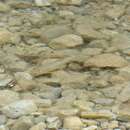en
names in breadcrumbs


Barbus haasi, or the Catalonian barbel[2] or redtail barb[1] Catalan: barb cua-roig; Spanish: barbo colirrojo or barbo de cola roja), is a species of freshwater fish in the family Cyprinidae.
It is a small size barbel found only in the northeast of the Iberian peninsula.[3] Morphologically it is similar to Barbus bocagei, but it is smaller and rarely reaches sizes longer than 20 cm (8 in)
Its natural habitats are rivers and inland karsts in all the basin, but mainly in inner Catalonia, especially in the Bages comarca area.
The species is threatened by habitat loss and the introduction of non-native species such as the pumpkinseed (Lepomis gibbosus) and the Wels catfish (Silurus glanis).[4][5]
{{cite journal}}: CS1 maint: date and year (link) Barbus haasi, or the Catalonian barbel or redtail barb Catalan: barb cua-roig; Spanish: barbo colirrojo or barbo de cola roja), is a species of freshwater fish in the family Cyprinidae.
It is a small size barbel found only in the northeast of the Iberian peninsula. Morphologically it is similar to Barbus bocagei, but it is smaller and rarely reaches sizes longer than 20 cm (8 in)
Its natural habitats are rivers and inland karsts in all the basin, but mainly in inner Catalonia, especially in the Bages comarca area.
The species is threatened by habitat loss and the introduction of non-native species such as the pumpkinseed (Lepomis gibbosus) and the Wels catfish (Silurus glanis).